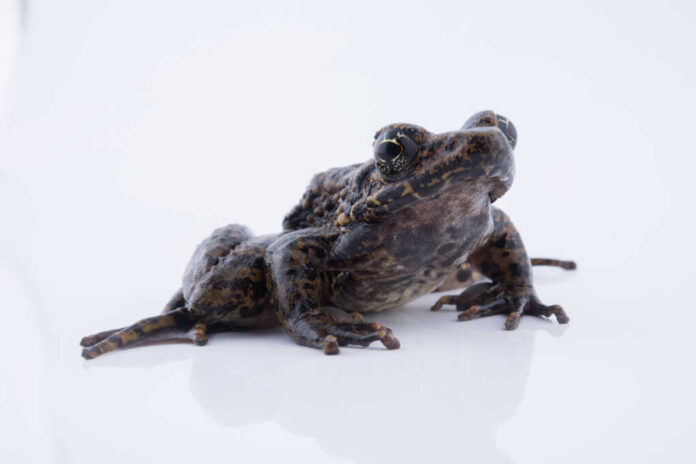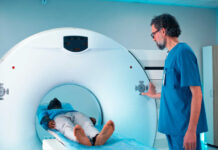
Scientists have made a breakthrough in antibiotic research by developing a new class of antibiotics derived from frog secretions, offering a potentially safer solution to the growing crisis of antibiotic resistance without harming beneficial gut bacteria.
At a Glance
- Researchers at the University of Pennsylvania have created synthetic peptides based on secretions from the South Asian frog species Odorrana andersonii
- These frog-derived antibiotics show effectiveness comparable to last-resort antibiotics without harming human cells or beneficial gut bacteria
- The World Health Organization predicts drug-resistant infections could kill 10 million people annually by 2050
- This innovative approach addresses the urgent need for new antibiotics as traditional ones face increasing resistance
Nature’s Solution to a Modern Crisis
Frogs have been developing natural defenses against bacteria for millions of years, and now scientists are tapping into this ancient wisdom to combat one of medicine’s most pressing challenges. Cesar de la Fuente and his team at the University of Pennsylvania have engineered synthetic peptides based on secretions from the South Asian frog species Odorrana andersonii. These secretions contain powerful antimicrobial properties that could help fight drug-resistant pathogens that increasingly threaten human health.
While the natural peptides from these frogs have antimicrobial properties, they’re unsuitable for clinical use due to problems with clumping and potential toxicity to human cells. Through a process of structure-guided design, researchers have modified these compounds to maintain their bacteria-fighting capabilities while eliminating harmful side effects. The resulting synthetic peptides demonstrate effectiveness comparable to last-resort antibiotics but with a crucial difference—they don’t harm human cells or beneficial gut bacteria.
The Growing Threat of Antibiotic Resistance
Antibiotic resistance represents one of the most significant public health challenges of our time. Since their introduction in the early 20th century, antibiotics have revolutionized medicine, extending the average human lifespan by 23 years and making many medical procedures possible. However, the effectiveness of these miracle drugs is waning as bacteria evolve resistance mechanisms, threatening to return us to a pre-antibiotic era where common infections could once again become deadly.
Particularly problematic are multidrug-resistant pathogens like carbapenem-resistant Pseudomonas aeruginosa, vancomycin-resistant enterococci (VRE), and methicillin-resistant Staphylococcus aureus (MRSA). These bacteria have developed resistance to multiple antibiotics, severely limiting treatment options. A 2024 report in The Lancet estimated that 1.14 million deaths in 2021 were directly attributable to drug-resistant bacterial infections, highlighting the urgent need for new approaches.
How Frog-Derived Antibiotics Work
Antimicrobial peptides (AMPs) like those derived from frog secretions offer a promising alternative to traditional antibiotics. These naturally occurring compounds have several advantages, including low resistance selection, rapid action, and broad-spectrum efficacy against many types of bacteria. Unlike conventional antibiotics that typically target a single bacterial process, AMPs exhibit multifunctional killing effects, making it more difficult for bacteria to develop resistance.
The synthetic peptides developed from frog secretions work by disrupting bacterial cell membranes and targeting internal processes such as protein synthesis and cell wall formation. Their structural characteristics allow them to remain inactive in aqueous solutions but become active when they contact bacterial membranes. This targeted approach explains why they can effectively kill harmful bacteria while sparing human cells and beneficial gut microbiota, potentially reducing the side effects commonly associated with antibiotic treatments.
A New Era in Antibiotic Development
The frog-derived antibiotics represent just one of several innovative approaches scientists are pursuing to combat antibiotic resistance. Researchers at Cold Spring Harbor Laboratory have developed shape-shifting antibiotics using click chemistry to fight superbugs, while a team at the University of Illinois Chicago discovered that a natural peptide from fruit flies called drosocin can cause bacterial cells to self-destruct by binding to bacterial ribosomes and inhibiting protein production.
Computer-aided design is also proving valuable in the search for new antibiotics. Dr. Christopher McMaster and his team have developed a family of antibiotics targeting the enzyme holo-acyl carrier protein synthase (AcpS), which is crucial for bacterial survival and previously untargeted by existing antibiotics. These technological advances, combined with a renewed interest in natural product discovery, offer hope that we may yet overcome the antibiotic resistance crisis through a diverse arsenal of innovative approaches.
Sources:
https://phys.org/news/2025-03-scientists-frogs-antibacterial-secrets-combat.html
https://pmc.ncbi.nlm.nih.gov/articles/PMC6822926/
https://scitechdaily.com/fruit-fly-compound-could-lead-to-new-antibiotics/
New shape-shifting antibiotics could fight deadly infections
https://www.sciencedirect.com/science/article/pii/S1369527419300190
https://www.sciencedaily.com/releases/2025/03/250325114917.htm
https://www.zoores.ac.cn/article/doi/10.24272/j.issn.2095-8137.2019.062
https://pmc.ncbi.nlm.nih.gov/articles/PMC3569700/
https://healthandpharma.net/mit-drug-discovery-ai-superbugs-antibiotic-resistance


















